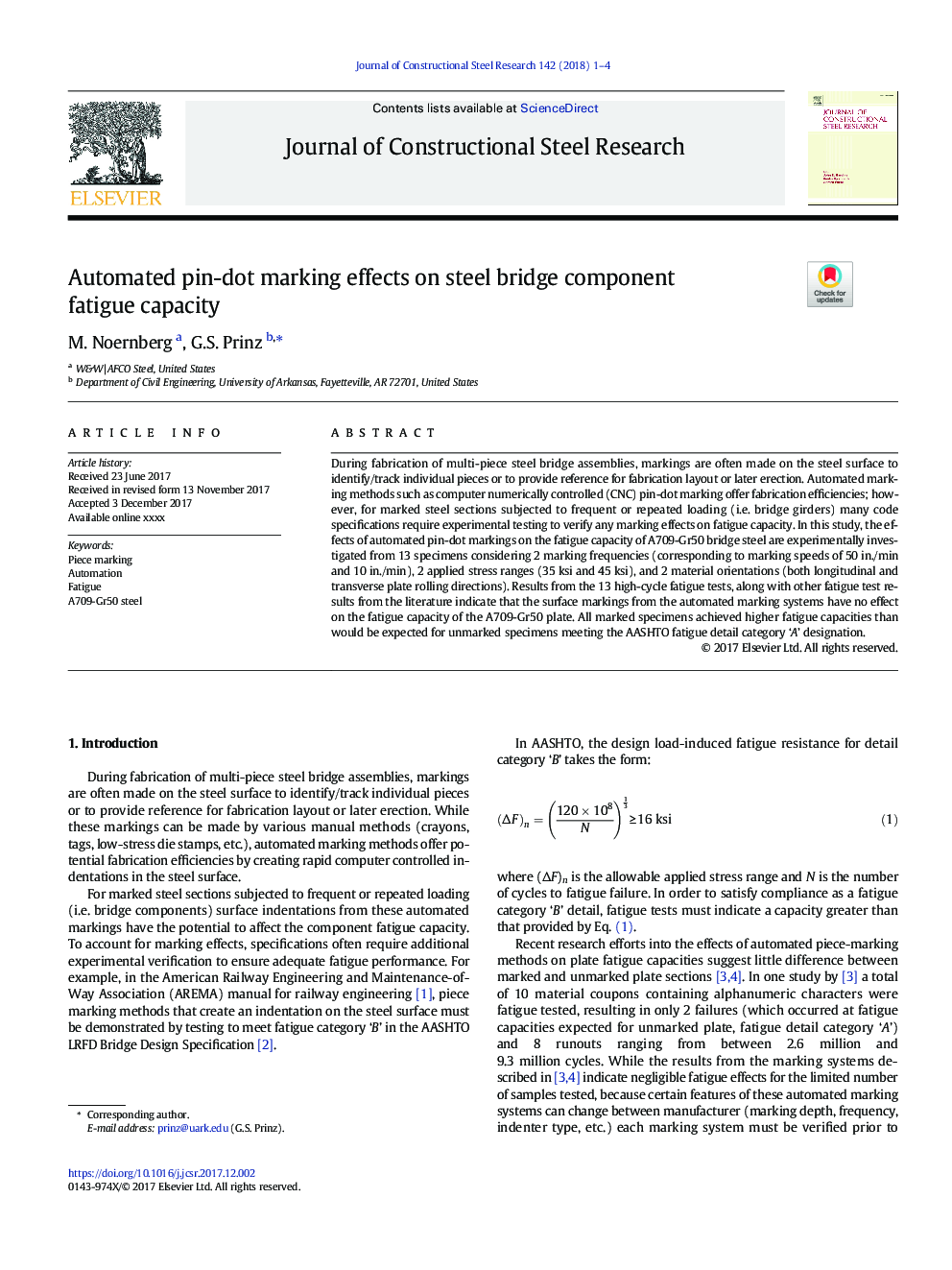| Article ID | Journal | Published Year | Pages | File Type |
|---|---|---|---|---|
| 6751047 | Journal of Constructional Steel Research | 2018 | 4 Pages |
Abstract
During fabrication of multi-piece steel bridge assemblies, markings are often made on the steel surface to identify/track individual pieces or to provide reference for fabrication layout or later erection. Automated marking methods such as computer numerically controlled (CNC) pin-dot marking offer fabrication efficiencies; however, for marked steel sections subjected to frequent or repeated loading (i.e. bridge girders) many code specifications require experimental testing to verify any marking effects on fatigue capacity. In this study, the effects of automated pin-dot markings on the fatigue capacity of A709-Gr50 bridge steel are experimentally investigated from 13 specimens considering 2 marking frequencies (corresponding to marking speeds of 50Â in./min and 10Â in./min), 2 applied stress ranges (35Â ksi and 45Â ksi), and 2 material orientations (both longitudinal and transverse plate rolling directions). Results from the 13 high-cycle fatigue tests, along with other fatigue test results from the literature indicate that the surface markings from the automated marking systems have no effect on the fatigue capacity of the A709-Gr50 plate. All marked specimens achieved higher fatigue capacities than would be expected for unmarked specimens meeting the AASHTO fatigue detail category 'A' designation.
Keywords
Related Topics
Physical Sciences and Engineering
Engineering
Civil and Structural Engineering
Authors
M. Noernberg, G.S. Prinz,
